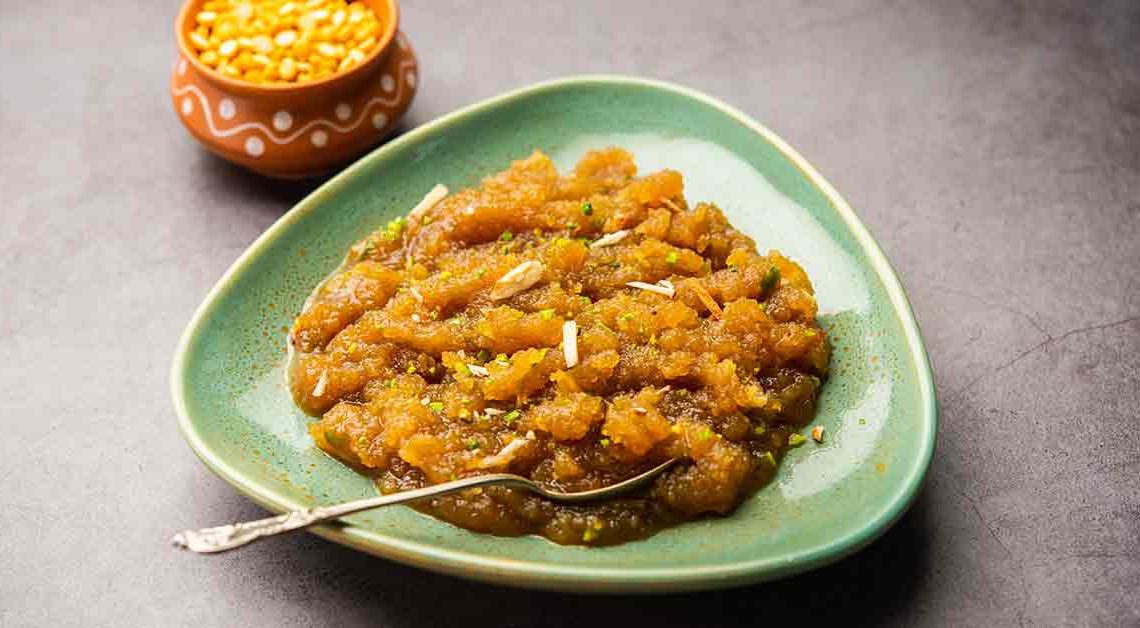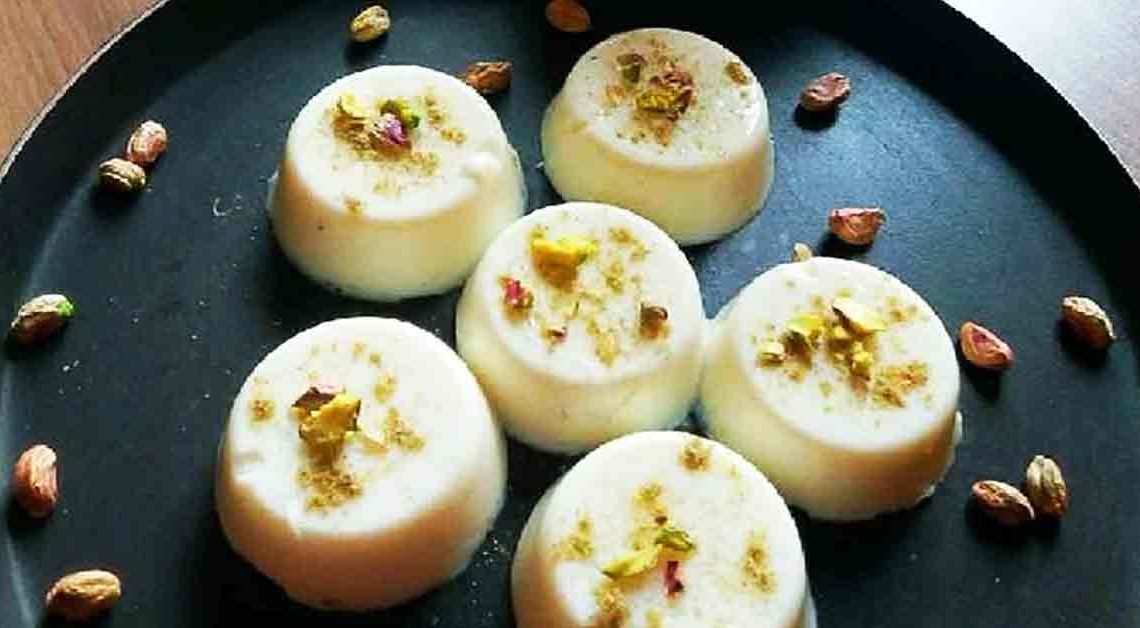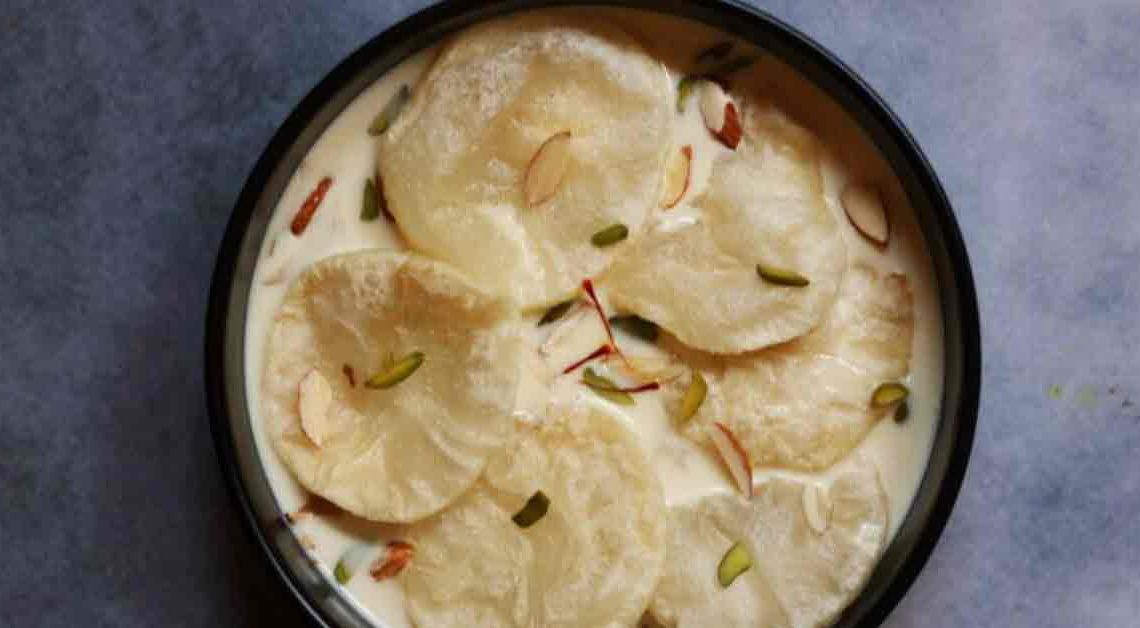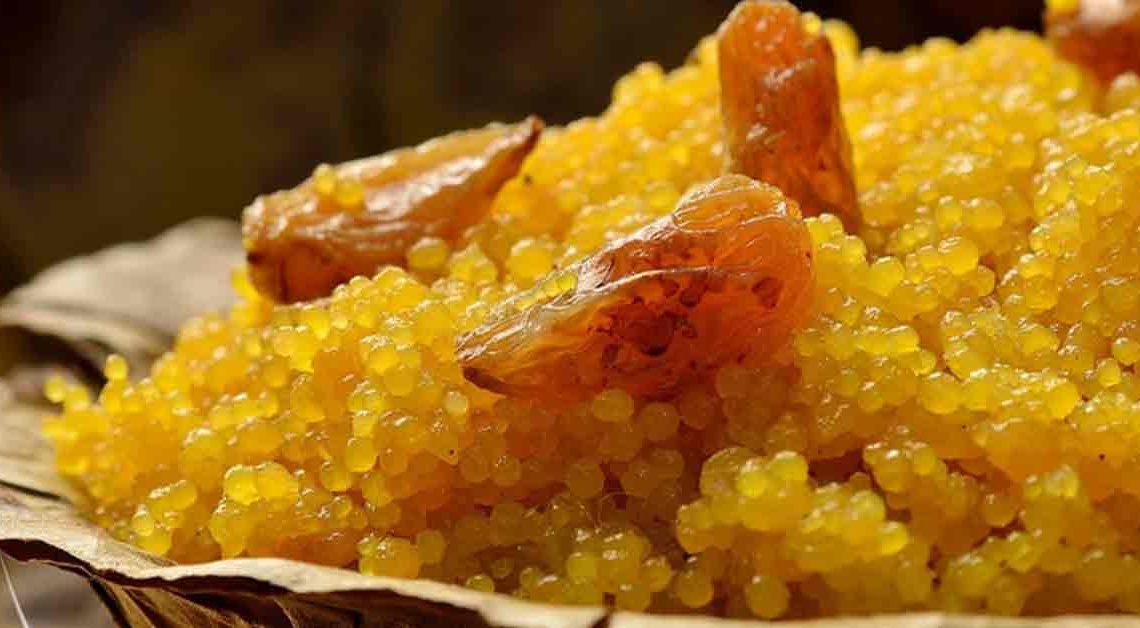A Sweet Symphony of Chickpea Flour: Besan Halwa

Are you ready to embark on a culinary journey that will tantalize your taste buds and warm your heart? Welcome to Mithainama, where we’re about to uncover the secrets of a dessert that’s as comforting as it is delicious – Besan Halwa!
Picture this: golden ghee-infused besan, toasted to perfection, transforming into a rich, nutty aroma that fills your kitchen. Add in sugar, cardamom, and a handful of crunchy nuts, and you’re in for a dessert experience like no other. Each spoonful of Besan Halwa takes you on a journey through the streets of India, where the scent of spices mingles with the warmth of family gatherings.
Get ready to awaken your senses and delve into the world of Besan Halwa – a heartwarming and golden-hued dessert that’s more than just food; it’s an experience.
Origin of Besan Halwa
Besan Halwa, a beloved Indian dessert, has a rich culinary history deeply rooted in the Indian subcontinent. Its origins can be traced back to North India, where it is known by various names, including “Besan Ka Halwa” or “Chana Dal Halwa.” The dish has been a part of Indian cuisine for centuries and is a staple at festivals, special occasions, and religious ceremonies.
The primary ingredient is besan, which is essentially gram flour made from chickpeas. Gram flour has been a crucial component of Indian cooking for a very long time, particularly in regions where chickpeas are grown abundantly. It is used in a wide range of dishes, from savory snacks like pakoras and dhokla to various sweets like laddoos and, of course, Besan Halwa.
It is not only cherished for its delicious taste but is also associated with warmth, comfort, and tradition. It’s often prepared and served during festivals like Diwali and Holi, as well as on special family occasions and celebrations.
History of Besan Halwa
Besan Halwa, a delectable Indian dessert, has a history as rich and diverse as the country’s culinary heritage. Its roots can be traced back to ancient India, where it was created using simple ingredients and traditional techniques.
The word “besan” refers to gram flour, derived from chickpeas, and its use in Indian cuisine dates back centuries. It is believed that Besan Halwa, or variations of it, existed during the Mughal era, where culinary influences from Persia and Central Asia merged with Indian flavors. This fusion gave rise to a variety of sweet dishes, including the precursor to Besan Halwa.
Over time, the art of preparing has evolved. The process involves roasting gram flour in ghee until it reaches a golden hue, which imparts a distinct nutty aroma and flavor. The addition of sugar, cardamom, and an assortment of nuts adds complexity to the dish, making it a favorite at celebrations and festivals.
Cultural Significance
Besan Halwa, a classic Indian dessert, holds significant cultural importance in the diverse tapestry of Indian society. Here are some key aspects of its cultural significance:
Festivals and Celebrations: It is a quintessential part of Indian festivals and celebrations. It is prepared during auspicious occasions like Diwali, Holi, Raksha Bandhan, and weddings. Serving dessert signifies the sweetness and prosperity associated with these events, making it an integral part of the celebratory feasts.
Religious Offerings: In some regions of India, it is offered as prasad (religious offering) at temples like atta halwa and during religious rituals. It symbolizes devotion and a way of sharing blessings with the divine.
Regional Variations: India’s cultural diversity is reflected in the various regional adaptations of Besan Halwa. Each state or community may have its own version, with unique flavors, ingredients, and preparation methods, further underscoring the cultural diversity of the country.
Where is Besan Halwa Famous?
Besan Halwa is famous and enjoyed throughout the Indian subcontinent, and its popularity extends beyond the borders of India. Here are the regions and countries where it is particularly renowned:
India: It is a beloved dessert across India. It is prepared and relished in various states, each with its own regional variations and names. It is especially popular in North India, where it’s known as “Besan Ka Halwa.” However, it is enjoyed in South India, West India, East India, and the central regions as well.
Pakistan: It is also a popular sweet treat in Pakistan. It is known as “Besan Ka Halwa” or “Gram Flour Halwa.” The recipe and preparation method are similar to those in India, showcasing the culinary connections between the two countries.
Bangladesh: In Bangladesh, it is a delightful dessert enjoyed on special occasions and celebrations. It’s known as “Cholar Dal Halwa” and is made with a similar process using gram flour.
Interesting Facts and Trivia
Besan Halwa, a delightful Indian dessert, has an interesting history and cultural significance, as well as some lesser-known facts and trivia:
- Besan, or gram flour, is naturally gluten-free, making a suitable dessert for those with gluten sensitivities or celiac disease.
- In some parts of India, you can find it served as a street food, particularly during festivals and fairs. It’s often cooked in large quantities and offered to the public as a gesture of celebration.
- It can be adapted for specific dietary preferences. It can be made vegan by substituting ghee with plant-based alternatives like coconut oil and using dairy-free milk. It can also be sweetened with jaggery for a healthier option.
- Apart from cardamom, some regional variations include the use of saffron, rosewater, or nutmeg to infuse unique flavors into the dessert.
- In many households, Besan Halwa is served on a special plate or in a silver bowl, particularly when hosting guests or during festive occasions. This reflects the cultural significance of the dessert.
Did You Know?
Besan Halwa, the beloved Indian dessert, not only tantalizes your taste buds but also offers some surprising health benefits:
- Besan (gram flour) is an excellent source of plant-based protein. Consuming it can help supplement your daily protein intake, making it a nutritious dessert option.
- Besan contains essential nutrients like iron, and folate. These micronutrients are vital for various bodily functions, including energy production and red blood cell formation.
- The warming properties are combined with ghee and spices like cardamom, can aid digestion and provide relief from common digestive discomforts.
- The complex carbohydrates in it release energy slowly, helping you maintain energy levels throughout the day. It’s a great choice for a quick energy boost.
- Gram flour is a good source of dietary fiber, which supports a healthy digestive system and helps regulate blood sugar levels.







